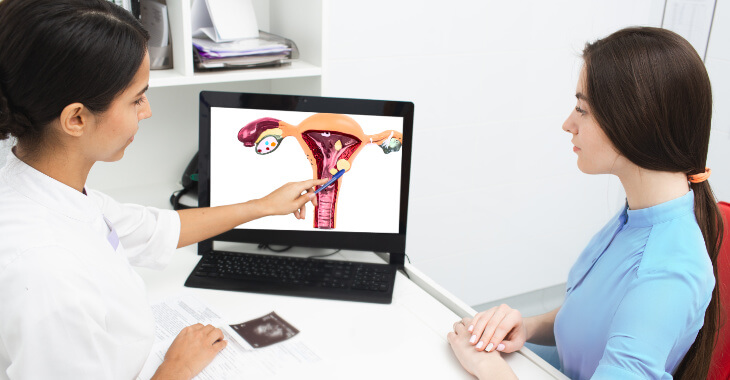How Do I Know If I Have a UTI vs STD?

Both urinary tract infections (UTIs) and sexually-transmitted diseases (STDs) can have similar symptoms. If you have discomfort urinating or itching in the genital area, you may wonder whether you have a UTI or STD. While they do have some of the same symptoms, there are differentiating signs that can help determine which type of condition you have. When it comes to UTI vs STD symptoms, here are some of the similarities and differences and how to tell if you have one or the other.
What Is a UTI?
A urinary tract infection, or UTI, occurs when bacteria flourish inside the urinary tract. The bacteria come from feces and if they are able to enter the urethra, they can multiply and travel up into the bladder and kidneys. If you get a UTI, it can start with a mild infection in the urethra, but it can become serious if it travels up into the upper urinary tract.
UTIs occur due to a variety of reasons. There are always bacteria from feces in the genital area, but most do not make it into the urinary tract. Urine will kill bacteria in small numbers, flushing them out of the system. But in large numbers or when no urine flows through the urethra, a bacterial infection can occur. Some of the possible causes of a UTI include:
- Wiping back to front after a bowel movement
- Holding back from urinating
- Not urinating after sexual activity
- Using a catheter
- Wearing tight or unbreathable clothing
Urinating often clears out bacteria from the urethra and minimizes chances of a UTI. Keeping the area clean and dry can help reduce risks of a UTI.
What Is an STD?
There are many different types of sexually-transmitted diseases, but all have one thing in common – they are transferred between people during sexual activity. The virus or contagion that causes the disease is transferred through contact during oral, anal or vaginal sexual activity. Some STDs have few or no early symptoms, but some can have similar symptoms to a UTI.
STDs usually only occur if you have had sexual contact with another person. While it is possible to get an STD from touching personal items used by someone with an STD, it is unlikely. STDs can be very serious and cause serious health conditions if not treated in the early stages. In most cases, they can be prevented by using protection like condoms during sexual activities.
Similar UTI or STD Symptoms
There are some STDs that can have similar symptoms to a UTI. In fact, many times an STD can be misdiagnosed as a UTI, both a self-diagnosis and doctor diagnosis. UTIs are very common and since anyone can get a UTI under the right circumstances, they occur more often than STDs. Some of the signs and symptoms that can indicate either a UTI or an STD include:
- Pain or burning when urinating
- Pelvic pain
- Bad urine odor
- Cloudy urine
- Frequent or urgent need to urinate
If you have these symptoms, you could have either a UTI or an STD and should see your doctor. You will need testing to determine which one you have and the right treatment plan.
Differences of UTI vs STD
While there are similarities between some STDs and UTIs, there are other signs if you have an STD. While you can have all the symptoms of a UTI with an STD, there are additional symptoms and signs that can indicate an STD. You do not want to be treated for a UTI with antibiotics if you really needed a different treatment for an STD. Some of these symptoms include:
- Pain with intercourse
- Sores or blisters around the genitals
- Joint pain
- Rash around genitals
- Fever (although severe UTIs can also result in a fever)
- Nausea
- Sore throat
If you are sexually active and you have symptoms of a UTI, it is possible you have an STD. The best way to know for sure is to see your doctor. It is important to be honest about your sexual activity and symptoms to ensure the right diagnosis is made. Testing is the only way for STDs to be clearly diagnosed so that the right treatment can be recommended if needed.

There are both similarities and differences between a UTI vs STD, making it hard to determine which you may have on your own. It is important not to assume you have a UTI when you may have an STD. In either circumstance, it is best to schedule a visit to your doctor to get tested for an STD for a professional diagnosis. Your doctor can determine the best treatment to get relief from your symptoms of a UTI or STD and help you overcome the condition.
The information provided on this website, including text, graphics, images, and other materials, is intended solely for informational purposes and should not be used as a substitute for professional medical advice, diagnosis, or treatment.



)